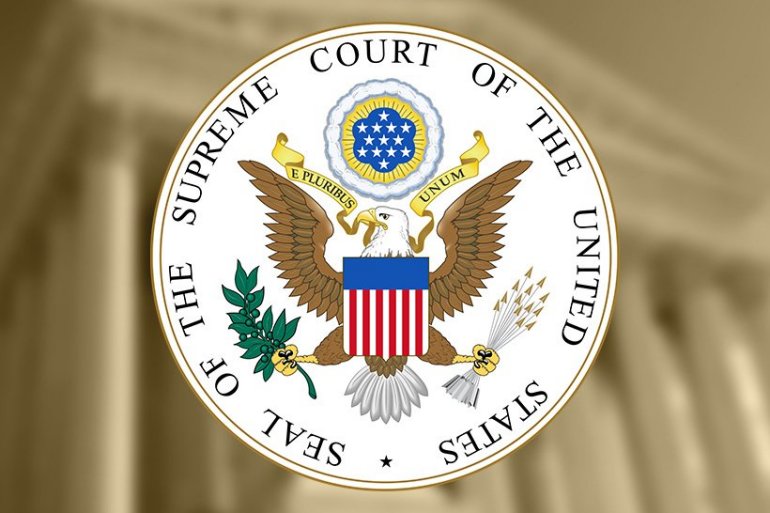Are you tired of the ATF “redefining” things as prohibited items after they were initially approved? Over at The Truth About guns, attorney Cody Wisniewski weighed in on the potential of a US Supreme Court case of Loper Bright Enterprises v. Raimondo. The ‘Raimondo’ case may reshape the ability of the BATF to issue arbitrary edicts restricting gun rights, gun parts and definitions of firearms on a whim through regulatory rule-making.
Here’s a long teaser. It’s worth the time to read the rest.
Last week, the Supreme Court agreed to hear a case about commercial fishing that raises an issue the current members of the Court have been very interested in as of late—Chevron Deference. With the Court agreeing to hear the case, there has been a lot of speculation about what the end of Chevron may mean across the legal landscape. But what might it mean for gun rights?
First, it’s important to understand what Chevron Deference is. Chevron, as it’s not-so-affectionately called among legal circles, is a doctrine that was established by the Supreme Court in Chevron v. Natural Resources Defense Council almost 40 years ago. That doctrine states that if a court is trying to interpret an ambiguous statute being enforced by a federal executive branch agency, the court must defer to the agency’s interpretation of the statute so long as it’s “reasonable…”
As a result, we now have a system where executive branch agencies that control almost every aspect of life in the United States have become judge, jury, and executioner.
Now, the Supreme Court has agreed to take up this question. Specifically, the Supreme Court granted review in a case called Loper Bright Enterprises v. Raimondo. With that case, the Court is looking to address the following question:
Should the Court overrule Chevron…or at least clarify that statutory silence concerning controversial powers expressly, but narrowly granted elsewhere in the statute does not constitute an ambiguity requiring deference to the agency.
Also relevant, the newest Supreme Court Justice, Justice Ketanji Brown Jackson, is recused from the case. Only the eight remaining Justices will hear and consider the question: Chief Justice Roberts, and Justices Thomas, Alito, Sotomayor, Kagan, Gorsuch, Kavanaugh, and Barrett. That sets up a potentially interesting split.
Based on recent opinions from Justice Thomas and Justice Gorsuch, and the Court’s recent treatment of the related Auer Deference (like Chevron, but deference as to an agency’s interpretation of its own regulations, rather than federal statutes), it seems like this case may spell the end for the controversial doctrine.
What would the end of Chevron mean for gun rights?
As you’ve probably already surmised, the Bureau of Alcohol, Tobacco, Firearms and Explosives, or the AFT/ATF, is one such federal agency that has benefitted greatly from Chevron Deference over the past few decades. An end to that deference across the board would means an end to courts’ deferring to the ATF’s “interpretation” of so-called “ambiguous” federal gun control statutes across the board, which would strike a massive blow in reducing the agency’s unconstitutional overreaches in a number of areas.
Interestingly, we’ve already seen some courts move away from deference to the ATF. In Cargill v. Garland, a challenge to the Trump-era bump stock ban, the entirety of the Fifth Circuit recently ruled that the ban was outside of the ATF’s scope of authority, and it specifically stated that the Circuit cannot and would not defer to the agency’s interpretation because the law has criminal implications.
Thus, under a competing doctrine known as the rule of lenity, the Circuit must read the statute as narrowly as possible in favor of the individuals the law would be enforced against. And the Sixth Circuit just ruled in a very similar way in Hardin v. ATF.
But there isn’t any consistency yet on the issue, and the Supreme Court has not weighed in on the interplay of lenity and Chevron. While the end of Chevron might not be as earth-shattering for the ATF as it would be for other federal agencies, it would certainly help firmly settle the question that executive branch agencies can’t bend congressionally-enacted law to the agencies’ will—including the ATF.
Of course, such a ruling would be directly relevant to the ongoing challenges to Biden’s ATF’s “Frame or Receiver Rule,” such as VanDerStok v. Garland, and its Stabilizing (or Pistol) Brace Rule, such as Mock v. Garland. But most importantly, the end of Chevron would be an important turn back to the actual structure of the Constitution and an important recognition of the separation of powers—a turn the nation desperately needs.
Cody J. Wisniewski (@TheWizardofLawz) is a Senior Attorney for Constitutional Litigation with FPC Action Foundation. His work has appeared in the Washington Times, the Washington Examiner, National Review, the Federalist, and more. He primarily focuses on Second Amendment issues but is happy so long as he is reminding the government of its enumerated powers and constitutional limitations.

What I am most tired of is losing ground to the leftists while lawyers and courts jack off and waste time. This is an assault upon one of the very bedrocks of our freedoms by legislative scum that couldn’t pass a civics test with crib notes, and nothing is being done.
As we have all seen, even the rulings of SCOTUS mean nothing to the trash that infests the GA.